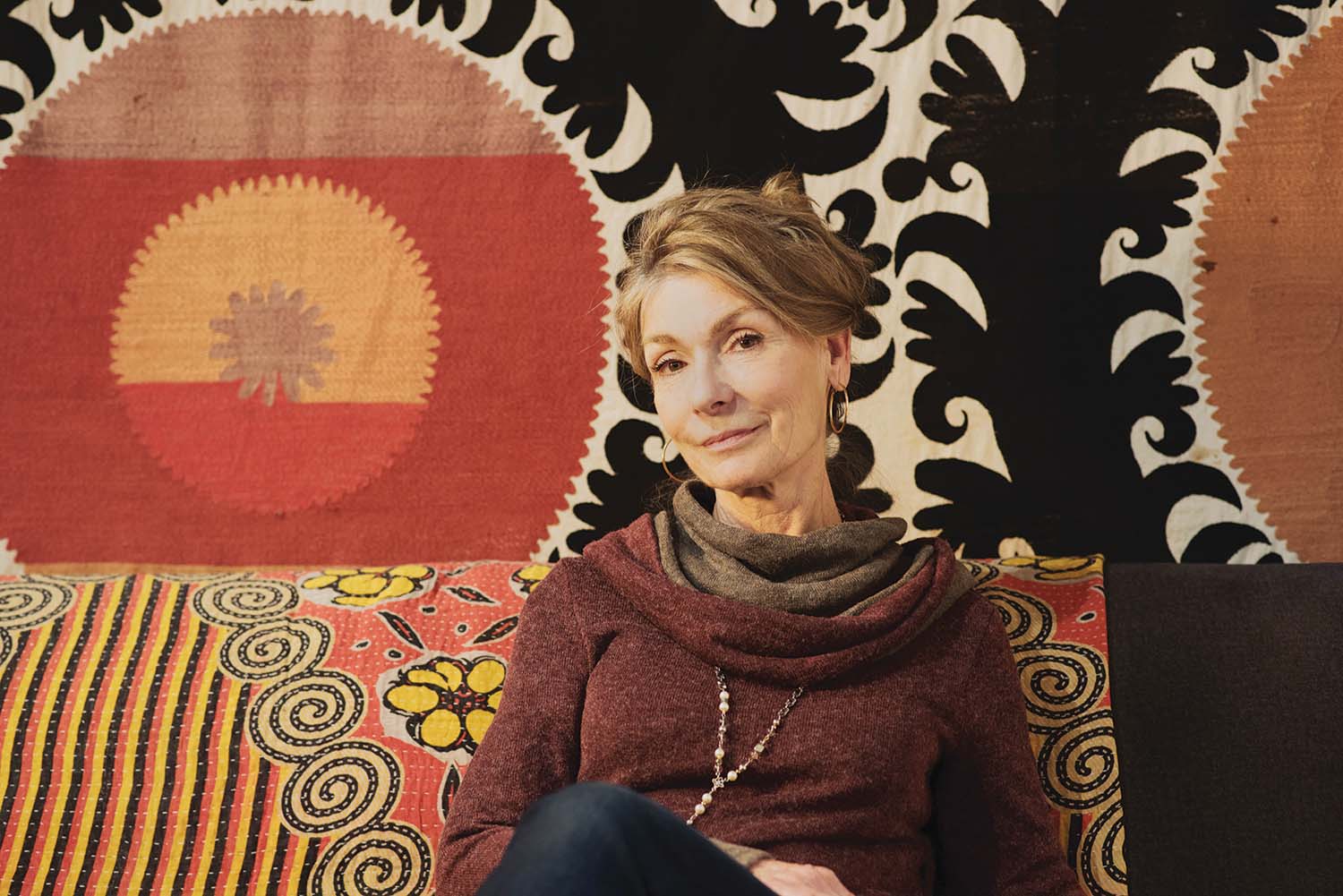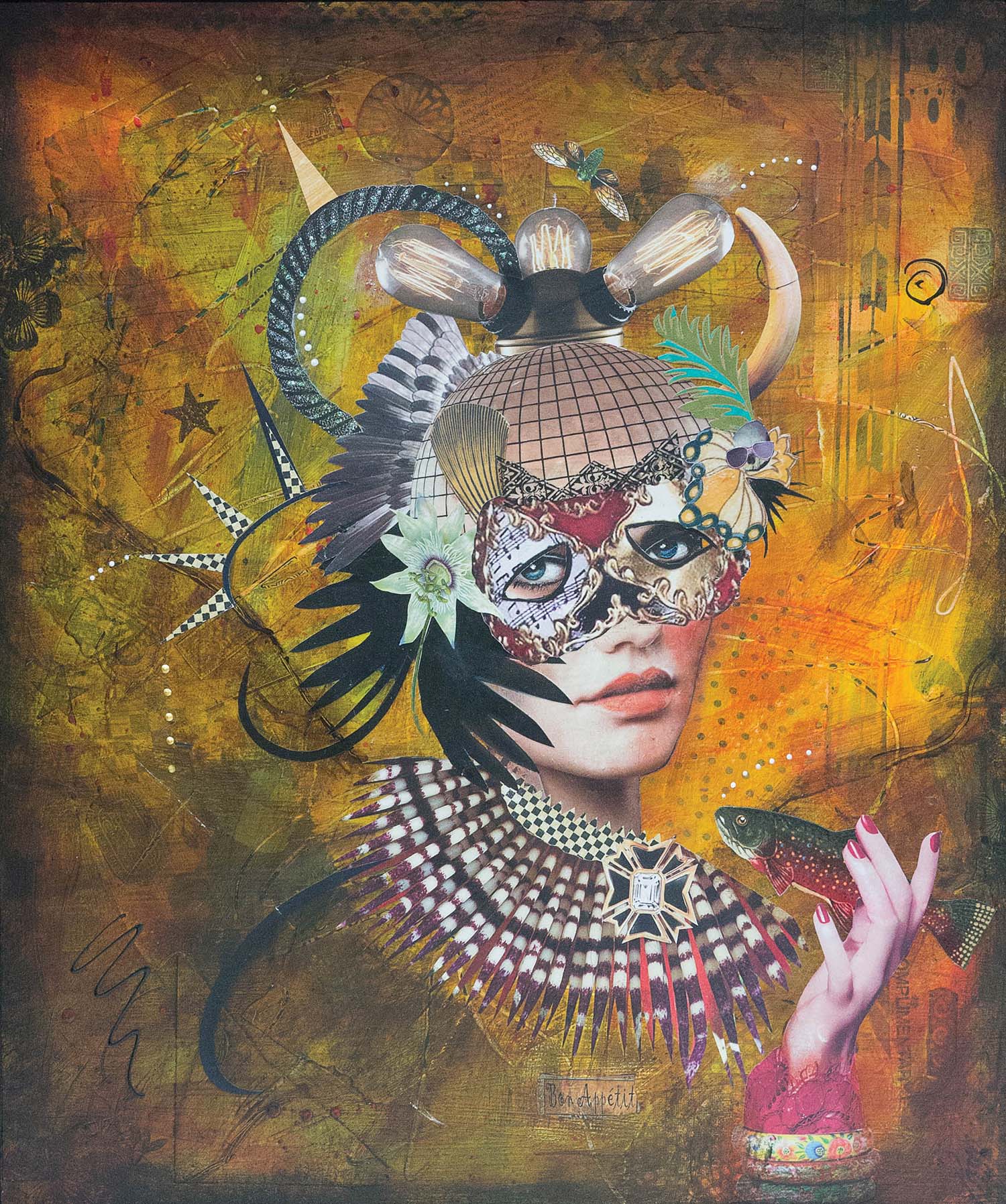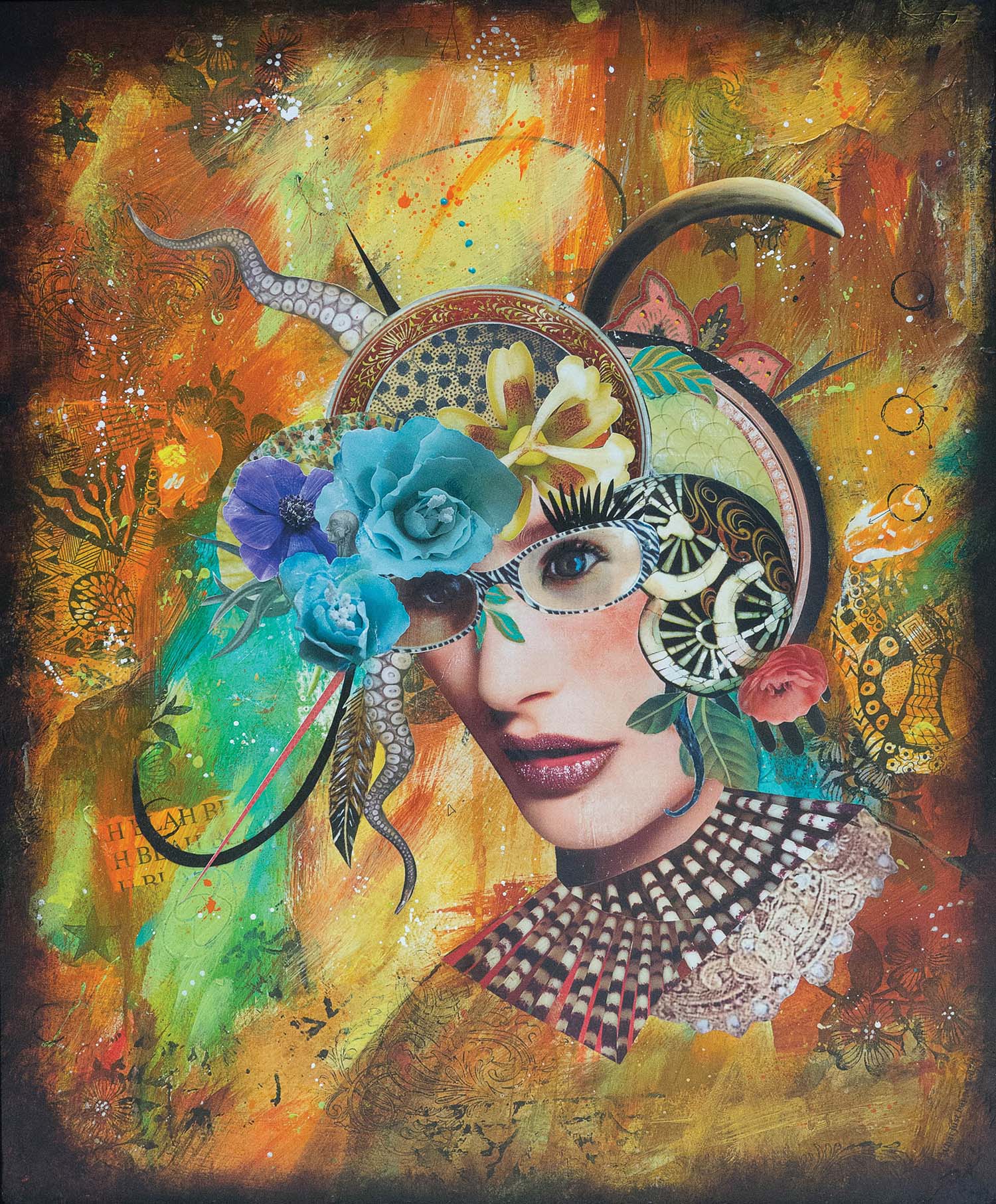
It’s not your imagination. The eyes in Patti Anastasi’s paintings are, in fact, looking directly at you.“So often, in our fast-paced world, we neglect to look at each other,” explains Anastasi. “When we slow down enough to look someone in the eye, chances are we will connect on a human level instead of a technological level.”
Though their gazes have an intoxicating intensity, the subjects aren’t meant to intimidate. “I try to make the eyes on my characters draw the viewer in [and] perhaps identify with the character for a moment,” she says.
Anastasi unveils the start of her process: “The faces begin as a composite of photographed faces that I enhance with oil pastels and colored pencils.” The rest, however, “is trade secret,” she says.

She graduated with a Master’s degree in Psychology/Art Therapy from Notre Dame de Namur University in Belmont, California. For years, she’s worked with children and adults, helping them cope with anxiety, depression, trauma, and anger.
But she’s quick to separate oversimplified notions of art therapy — such as a client making random projects, or undergoing stern direction — from what she does. Anastasi develops a gradual relationship with her clients; the art medium is carefully chosen, and the interpretation of finished works, while guided by her strong background in psychotherapy, is a collaborative process. She regards art therapy as a misunderstood profession.
On a personal level, Anastasi says her own art making is “centering and joyful,” though she’s careful about calling it therapeutic. Naturally, though, her background comes into play: “I can usually find the psychological significance in my work,” Anastasi admits. In some of her most striking work, characters are defined by eye-catching headgear. Citing Native American culture as an influence, she points out that “headdresses can incorporate complex meanings, including religious symbolism, social status, political power, ceremonial use — or be simply for the fashion conscious.
“My characters,” she adds, “wear headdresses as a statement of male-female equality.”

In the San Francisco Bay area, Anastasi was involved in art-outreach programs such as The Imagine Bus Project, an effort to help children in underserved neighborhoods. She’s also led numerous “expressive arts” workshops aimed at adults. Anastasi moved here three years ago after a close friend in California, an Asheville native, came back to the Appalachians. “She always said it was a unique place, so I came to visit a few times. And sure enough, I caught the magic of it.”
The artist grew up in the Philadelphia area, frequenting museums there and in New York City before heading to the West Coast for college. Indecision didn’t figure into her plan. “I never wanted to be an artist,” says Anastasi. “I just am.”
Patti Anastasi, 342 Depot St., in the River Arts District. 415-250-9860. Anastasi’s work will be part of a Pink Dog Creative exhibit held in conjunction with The Collider’s ClimateCon 2018. An opening reception will be held at Pink Dog Creative Gallery, 344 Depot St., 5-8pm on Saturday, February 3, while an artist meet-and-greet takes place on Friday, February 9, 10-11am, at The Collider, 1 Haywood St. The show ends March 24. For more information: pattianastasi.com, pinkdog-creative.com, thecollider.org.
Wonderful article and artist!